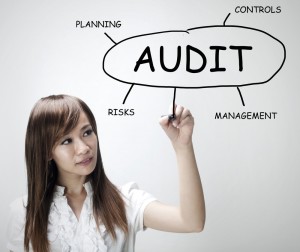“Ring out the old, ring in the new.” Field service inspectors cutting across sectors and industries can take inspiration from this quintessential A.L. Tennyson quote to start 2017 with a bang, leaving all the clutter, inefficiencies, and rut behind.
However, while intent is one thing, realizing it is a different ball game altogether. Here are some tips to achieve excellence in your field inspection efforts.
“Sharpen the Saw”
Most of the field inspections that take place are for statutory compliance or audits, to meet quality standards. Either way, reports are integral to the process, and such reports need to invariably confine to strict formats and have accurate measurements. A successful field inspector spends considerable time “sharpening the saw” or equipping themselves with the requirements of the inspection or audit, gathering the correct forms, understanding the nature of input required, and having a clear cut idea as to how to approach the inspection in a way that would enable realization of the objectives in the quickest and easiest way.
The tricky part is keeping abreast of the latest requirements. Regulations and requirements are fluid, and just as business processes, these too keep on changing. If you are a field inspector looking to excel in your work, you need to keep yourself attuned to the “in-thing” and the latest developments in your niche. Trade journals, popular online forums, and website of regulatory bodies are good starting points.

Go Tech Savvy in Data Collection
Going tech savvy should rank very high on the list of a field inspector’s New Year resolutions.
Data runs central to the scheme of things in inspections and audits. The success of field inspectors depends on collecting accurate and quality data. Developments in technology already make data collection easy. Emerging technologies such as IoT sensors offer scope to unlock even more types of data and automate to the next level. However, inspectors still have to setup and configure such technologies. Going tech savvy, to leverage the possibilities offered by not just IoT, but also GPS and other technologies should rank high on the agenda of an inspector looking to make 2017 more productive and efficient.
Capture of data is only one part of the equation. Processing the collected data is equally important, yet often overlooked. The best approach for today’s field inspectors is to upload the collected data into a cloud-based repository, allowing other stakeholders to follow up on the findings, and conversely for the inspector to start off seamlessly from where the previous inspector left.

Understand the Larger Picture
Data is rarely collected for the sake of it. There is often an underlying reason for why the data is required. Having a sound understanding of the primary nature of the business, and the basic safety best practices place the inspector in good stead in executing the job to perfection.
For instance, pole inspectors seek out damaged or overloaded poles to prevent such poles falling down and harming lives. Likewise, food safety inspectors need to have a sound understanding of the conservation measures in farming operations, to understand the risk assessment strategies adopted and advocated by farmers. They would also need to assess risks such as pathogens coming from a livestock area, and conduct any corrective actions to address underlying problems, for which they require a high degree of conceptual awareness.
Be Aware of the “Smaller Picture”
While understanding the larger picture offers loads of benefits, inspectors, especially those dealing with statutory compliance require precise “yes” or “no” answers. For instance, if personal hygiene has been compromised as part of a new process, the inspector will have to mark an “unsatisfactory” report and seek change, regardless of the long-term benefits the new method may bring about.
Apart from clear cut checklists to identify unacceptable conditions, the inspector also needs to engage with the stakeholders to convince them of the situation, answer questions, and often assist farmers or others with countermeasures to mitigate the unacceptable situation. Excellent communication skills and even negotiation skills can put the inspector in good stead.
Invest in Collaboration
Success often requires teamwork. Effective field inspection requires not just the right tools, but also experience that comes with handling several cases and issues, and expertise in solving complex cases that one encounters during the course of the work. An effective system to collaborate with experienced field inspectors, making field inspection a team effort, offers rich dividends.
Develop an Inspection App
The need of the hour is a good inspection app that reduce vexing paperwork, offers field inspector knowledge on best practices and up to date information related to the field, automatically generates and populates compliance and audit reports, facilitate seamless collaboration with team members, generates workflows and checklists, access previous reports and studies, and much more. Scheduling is also an integral part of the job, with many inspections to take place unannounced.

With our expertise spanning several projects, cutting across industries, be it food, automobile, or any other domain, where we have automated many complex and knotty situations, we are best poised to offer cutting edge field inspection software and solutions, customized to your needs. Partnering with us is guaranteed to enhance the efficiency and productivity of your field inspection interventions.
Also read through our latest blog, Field Inspectors: How to Succeed in FSM in 2020 and Beyond, to update yourself with the latest tips and trends.
Ashmitha Chatterjee
Ashmitha aspires to enhance the efficiency of service technicians. With a unique perspective on the challenges and opportunities within field service management, Ashmitha frequently shares her knowledge through industry blogs, articles and workshops.
More posts by Ashmitha Chatterjee


